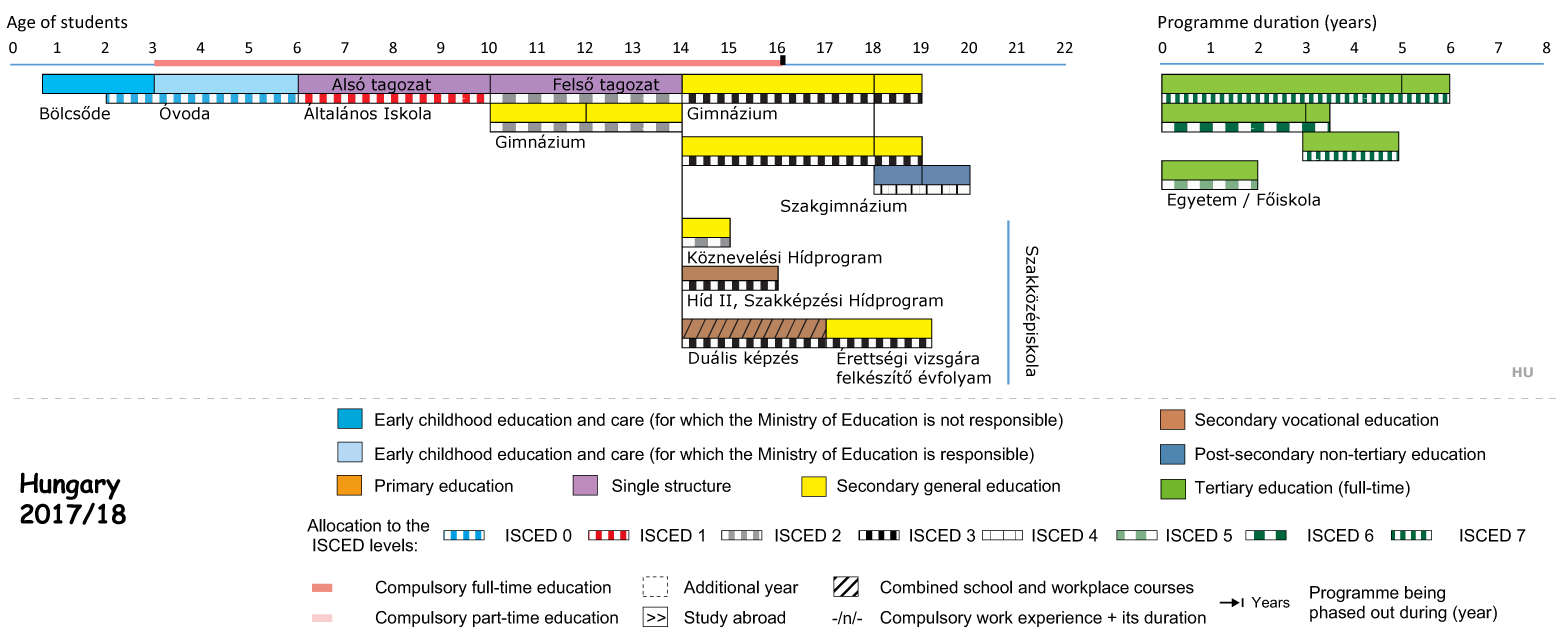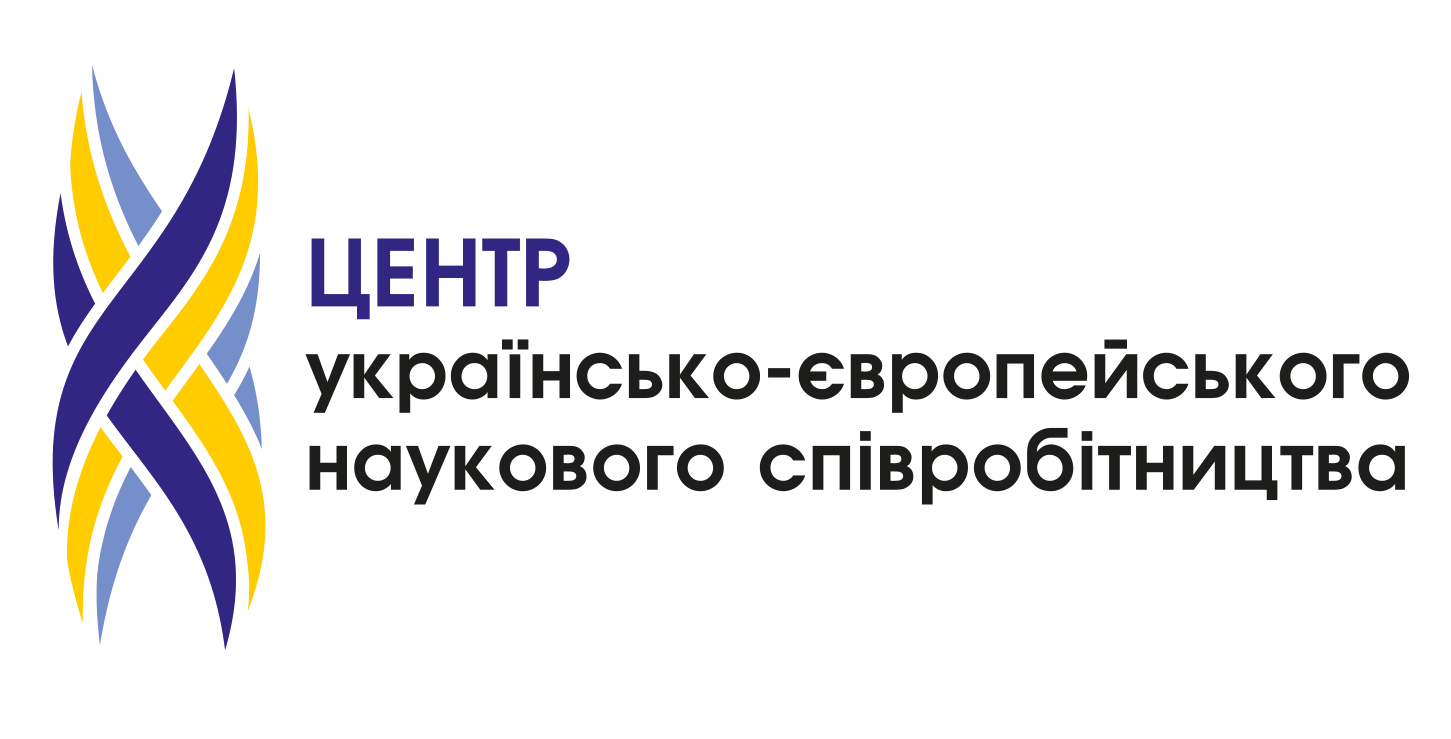 Key features of the Education System
Key features of the Education System
Establishment and maintenance
In Hungary, schools and kindergartens are established and maintained by the state, local governments, minority local governments, legal entities (foundations, churches, etc.) as well as natural persons. About 90 per cent of children attend public sector institutions.
Overall responsibility lies with the Ministry of Human Capacities, which is in charge of education, culture, social affairs, health care, youth and sport. However, school-based VET and adult training is within the competence of the Ministry for National Economy.
The maintenance of the education system became more centralized. In January 2013, the state took over the maintenance of public education institutions (with the exception of kindergartens) from the local authorities. The Government established Klebelsberg Institution Maintenance Centre for the maintenance of these institutions. Local governments get contribution from the central budget to finance kindergarten education, they are responsible for the organisation of ECEC on their settlement. Minority governments are allowed to establish schools and teach in their own languages.
Teaching and assessment
The minimum level of final qualification required for employment as a teacher is BA for teachers teaching at ISCED 0 and 1. It is BA or MA for teachers teaching at ISCED 2 and MA for teachers teaching at ISCED 3.
Teachers are free to choose their teaching methods. Every five years their work is evaluated by external experts contracted by a central Inspectorate.
Since 2001 in accordance with the provisions of the Act on Public Education, reading and mathematical literacy are tested on the full population of 6, 8 and 10 graders in the autumn of each school year. From school year 2005/06, testing of 4 graders (reading, writing, thinking and numeracy) takes place in every May.
An annual foreign language assessment of all pupils learning English or German as a first foreign language was introduced in June 2015 in grades 6 and 8. The Educational Authority organises the assessment and tests the reading comprehension of pupils.
Dual vocational education and ESL
The Vocational Training Act (adopted in 2011) introduced the 3-year vocational training system with reinforced dual elements, which provides practical training (in addition to theoretical classes) already from the first grade of vocational school. First it was applicable for students who entered vocational school (grade 9) in September 2013.
The early school leaving target rate for 2020 in the EU is 10 %. Hungary undertook this target rate by 2020. In 2016 the Hungarian early school leaving rate was 12,4 %.
Stages of the Education System
Participation in education is mandatory between the ages of 3 and 16. 10 years plus 3 year kindergarten education are compulsory. However, studies are financied until the age of 18.
- ISCED 0: 3 years
- ISCED 1: 4 years
- ISCED 2: 4 years
- ISCED 3: 2 years
Creche (bőlcsöde) is a welfare institution catering for children aged 20 weeks to 3 years and providing professional day care and development. Kindergarten (óvoda) education and care is offered for children aged 3-6 and is compulsory from age 3.
Primary and lower secondary education (ISCED 1, 2) is organised as a single-structure system in 8-grade basic schools (általános iskola) (typically for pupils aged 6-14, covering grades 1-8). Upper secondary education (ISCED 3, typically for pupils aged 14-18, usually covering grades 9-12) is provided by general secondary schools (gimnázium), vocational secondary schools (szakgimnázium) or vocational schools (szakközépiskola) or vocational school for special education (szakiskola). However, general secondary schools are also allowed to offer longer programmes starting earlier (from Grade 5 or 7).
General secondary schools provide general education and prepare for the secondary school leaving examination, which is the prerequisite for admission to higher education. Secondary vocational schools provide general and pre-vocational education, prepare for the secondary school leaving examination and offer vocational post-secondary non-tertiary programmes (ISCED 4 C). Vocational schools provide general, pre-vocational and vocational education and may also provide remedial lower secondary general education for those who have not accomplished basic school. Students can continue their studies to get upper secondary general school examination certificate after finishing their vocational programme.
Higher education programmes (ISCED 5A, 5B, 6) are offered by public or private universities (egyetem) and colleges (főískola) (non-university higher education institutions). In accordance with the three-cycle Bologna degree structure, there are Bachelor degree programmes lasting 6-8 semesters (ISCED 5A, 180-240 ECTS credits), which can be followed by Master degree programmes (ISCED 5A, 60-120 ECTS credits) for another 2-4 semesters. The third cycle provides doctoral studies (ISCED 6). Nevertheless, there are also undivided long programmes (10-12 semesters, 300-360 ECTS credits, ISCED 5A) in some disciplines, e.g. medicine or law.
Adult education and training includes part-time general education programmes at all ISCED levels, vocational education, as well as a wide range of non-formal courses provided by the public and private sector.
For information on recently adopted or planned reforms and policy measures, please consult the topic Ongoing Reforms and Policy Developments.
Structure of the National Education System
Resource: https://eacea.ec.europa.eu/national-policies/eurydice/content/hungary_en









